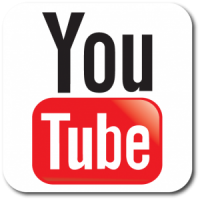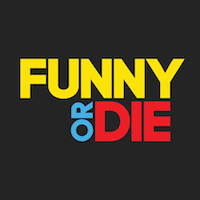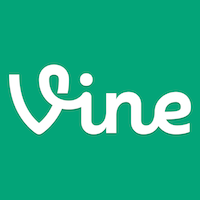Social media can be overwhelming.
There seems to be a new “must-use” social platform created every day and the pressure to leverage them to attract fans and grow your career can quickly become frustrating.
But the reality is you don’t actually have to use any of these platforms and you certainly don’t need to use all of them. To help you sort out which ones are worth the effort, I’ve put together a breakdown of what I see as the top nine platforms in order of value to a comedian’s career.
While the exact order may vary a bit depending on your specific career goals, this is a general ranking that I think fits for most comics. Whether you’re just starting out or 20 years into the game, these are the places I’d recommend you put your time into – in order from most important to least important.
1. An Email List
Don’t be fooled by the hype around the latest and greatest social platforms – email is still king. It’s the single best way to ensure people who are connected to you will see something you want them to see.
As great as social networks are, the vast majority of your followers on them won’t actually see your posts – you’ll be lucky to reach more than 10% of your followers with any given post and in most cases you’ll only reach about 5%.
By comparison, roughly 50% of your email subscribers (or more depending on the quality of your list), will open and read your email blast. Even a bad email list will still likely get at least 20% of the subscribers to open your emails, which is still a huge improvement over what you get on social networks.
Email lists are also the most valuable social platform because they’re completely in your control – you don’t have to worry about companies like Facebook or Twitter suddenly changing the rules of who sees your content and you also don’t have to worry about users abandoning the platforms entirely, making your connection to your audience on them disappear (see: MySpace).
An email list is without a doubt the most powerful social connection you can build to your fanbase and even the social networks themselves know it.
Have you ever thought about why Twitter and Facebook send so many emails to their users? It’s because they know you’re more likely to see those notifications in your email inbox than on their own platforms.
Recommended Reading: How To Get More People To Join Your Mailing List
2. A Website
The second most valuable platform also may seem a little old school to you. Too many comics believe a Facebook page is good enough and having their own website is an outdated concept, but that’s wrong.
Just like an email list, having your own website is something that you can 100% control forever and it’s not subject to the whims of a company who can block you, delete you, or make things difficult for you with tweaks in their algorithm or a loss of their own user base.
Your own website is also a blank canvas that allows you to create whatever best suits your personal needs and how you want to present yourself. It’s much more flexible than having to fit what you do into the constraints of somebody else’s platform.
There’s a million different easy ways to create a website (WordPress, Tumblr, etc.) and there’s really no excuse at this point not to have one. Plus, a website will get you found in Google search (and help you control what people see of yours when they search for you) and will make you look like a professional.
Not having a website – even if it’s just a simple one – sends a clear message to the world that you’re not serious about your career.
Recommended Reading: How 5 Successful Comedians Used Their Website Before They Were Famous
3. A Facebook Fan Page
Comics love Twitter, but the reality is that Facebook is a WAY bigger and more valuable platform for you.
Facebook has gotten so big that it practically is the Internet these days, and I’m sure you probably already have a Facebook account. But, if you don’t also have a Facebook fan page for yourself, you’re doing it wrong.
Having a fan page has several advantages including the ability to have an unlimited number of fans connect to you – regular profiles are capped at 5,000 friends, which may not seem like an issue now but will be if you ultimately have the success you want.
Most importantly, Facebook fan pages allow you to run Facebook ads to promote yourself and your content. Here’s a look at some of the amazing things that are possible with Facebook ads and how inexpensive they can be.
You can’t run Facebook ads without a fan page, and not having the ability to run Facebook ads is like taking the single most effective marketing tool out of your arsenal. It’s stupid.
Recommended Reading: 5 Free Ways To Get More People To See Your Facebook Posts
4. Twitter
Even though its value is below Facebook, Twitter can still be a valuable platform for comedians. Comedy content plays well on the platform and if you’ve got the ability to put funny stuff into the world in 140 characters or less, you can find some success and get noticed.
But, the real value in Twitter is often misunderstood. The way to get the most out of Twitter is not by using it as a broadcast medium or an always-on open mic, but rather to use it as a way to connect with other people.
The ability to follow and interact with anybody on the platform is powerful if used in a smart way and Twitter’s search functionality is one of the most overlooked and underused aspects of Twitter. You can use it to find people who are talking about the exact things you’re interested in and become a part of those conversations. Here’s some simple ways to get more out of Twitter that might make you think about the platform in a new way.
Recommended Reading: 5 Ways To Get More Out Of The Jokes You Post On Twitter
5. YouTube
If you’re creating videos, you should post those videos on YouTube (you should also upload those videos to Facebook’s native player as well by the way).
This is because YouTube is not only the biggest video hub on the Internet, but it’s also the second biggest search engine of any kind. Not uploading your videos to YouTube is the equivalent of telling Google that you don’t want to be found in their search results.
YouTube is the ultimate video platform, a place where you can get discovered, where you can build an audience, and where you can even monetize your work. People are building huge careers off the platform and it’s a must-use for anybody creating videos in my opinion.
Recommended Reading: Building A YouTube Audience
6. Vine
It’s appropriate that my sixth most valuable platform for comedians is a social network built on 6-second videos. Vine, which is owned by Twitter, has built a large user base and has a huge audience for funny content.
Comedy on Vine certainly has its own unique form and language, but if you can crack what works on the platform you can get discovered and build a following relatively quickly. There are also lots of relatively unknown comedians who have managed to monetize their work on Vine thanks to brands looking to reach audiences on the platform.
And the aesthetic of Vine is a lot more forgiving than YouTube, meaning that you don’t necessarily need to spend a lot of money on equipment or have a real professional look to your videos on the platform for them to work. Just shoot something funny with your phone and you should be fine.
Recommended Reading:5 Things You Can Learn From Vine Star King Bach
7. A Podcast
We’re still in the midst of a podcast boom – especially in the comedy world. At this point it may seem like every comedian has a podcast, but the truth is that the vast majority of them have barely any people listening to them.
However, there is still lots of potential value there for comics because the podcast audience continues to grow and there are still opportunities to grow an audience over time through a podcast.
The other hidden value of doing a podcast is that it can help improve your work as a comedian overall – it can help you work through new material, find your voice, or function as practice for future work in radio, writing, or hosting.
It’s not the same as stage time, but it is an opportunity to be on a mic and entertain people. It also can give you an excuse to interview and learn from other people, and if you’re smart enough to design your show in a way that it appeals to a specific niche audience that you’re trying to reach (as opposed to being just another inside baseball show featuring comics talking about comedy), it can help you attract and develop an audience that pays off in other ways down the road.
There’s definitely value in doing a podcast, but it’s important to remember that a podcast is a long term play and not a short term one. Whatever value you get from doing a podcast is likely to come years down the road and you have to be willing to put in the significant time and effort it takes to get there.
Recommended Reading: Stand Up Invades Podcasting
8. Instagram
Instagram is a great social platform and it’s growing very fast – it might surprise you to find out that it’s already bigger than Twitter.
There’s definitely value to reaching the Instagram audience and if you’re doing anything with your comedy that’s image-driven, I’d probable rank it a little higher for you.
But, for most comics, Instagram is significantly less valuable as a platform than the other options I’ve listed above. It’s just that what Instagram is about doesn’t really lend itself very well to what most comics are looking to put out into the world.
Also, as a promotional platform, it’s very limiting since you can’t incorporate links anywhere on the platform except for in your account bio. It can be helpful with the right kind of content and the ability to dip into certain hashtags and attract attention for your content that way can be useful, but overall at the moment it’s far from a must-use platform for comedians.
Recommended Reading: 4 Things You Can Learn From Social Media Stars
9. Snapchat
Snapchat is growing…fast. It’s already hugely popular with teenagers, is seeing lots of engagement from users, and its Stories feature enables you to string together content in a way you can’t on other platforms.
However, the platform still has a lot of issues that limit its value to comedians.
Since the content you post there is only available for 24 hours at most you lose the value of building a library of archived content, discovery on the platform is pretty terrible (you essentially have to know a person’s username to find them), you don’t get to see how many people are actually following you (only how many actually view a piece of content), and there’s no simple way for your fans to share your content with their friends.
So, at this point, Snapchat is far from a must-use platform for comics, but it’s growing so rapidly that it’s still worth being on this list and keeping an eye on as it evolves.
More Advice About Social Media…
I’ve got a lot more social media tips available to my VIP MEMBERS (join here for instant access) including How To Get More Influential Followers On Twitter and 7 Reasons The Stuff You Post On Social Media Should Also Be On Your Website among others.








